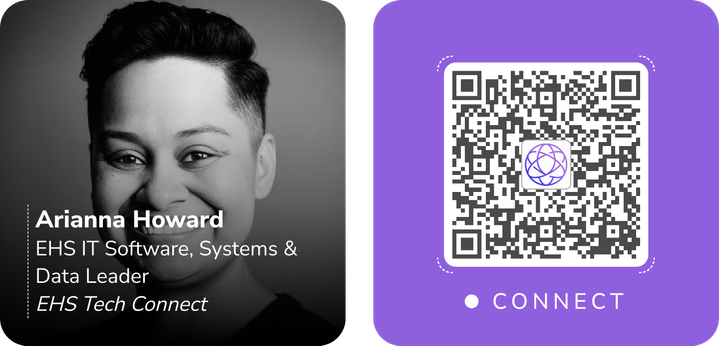The Role Most EHS Teams Are Missing
Why most EHS tech strategies stall—and how a part-time embedded leader could change everything.
Let’s be honest: Most EHS teams are stuck when it comes to digital strategy.
They likely don’t have a dedicated EHS IT lead. They’re piecing things together between operations, corporate IT, and someone who knows "enough" to push a project through. Or… they’ve tried a consulting firm that delivered a deck, a roadmap, and not much else, because they don’t understand the guts of the business.
Meanwhile, the demands around EHS data, software integrations, reporting, and compliance aren't slowing down.
Does this sound familiar?
Safety VP: “The COO wants to see injury data at the workstation level—and in a heatmap.”
EHS Director: “We’re three months into implementation and no one’s touched the action tracking module.”
Regional Manager: “I don’t care what system we use, just make the inspections mobile and not in five clicks.”
Corporate IT: “We can build one of those 5 things you need… in 1 year….if someone gives us the requirements.”
Operations Leader: “We’ve had three systems in five years. Why should I care about this one?”
Analyst: “I’m pulling data manually from five platforms just to build the same dashboard every month.”
The Case for a Fractional Approach
What most teams need isn't a full hire or vague high-level advisor. They need someone who:
Understands both safety/regulatory work and digital systems
Can speak the language of IT, operations, and the field
Can build trust quickly with internal stakeholders
Is capable of leading initiatives—from vendor selection to workflow configuration to end-user adoption
And crucially, someone who can do all of that without being full-time and without being a detached consultant.
This is where a fractional EHS IT leader fits in: a manager- or director-level professional embedded part-time, focused on execution, alignment, and momentum.
Fractional Roles Are Gaining Ground
The fractional model isn’t new. It’s already being used widely across industries in roles like c-level executives, project management, IT systems leadership, HR, and operations. Small to mid-sized organizations and growing teams are increasingly relying on part-time embedded specialists who can:
Deliver targeted outcomes
Integrate into team culture
Bring outside perspective without overwhelming internal systems
According to research by SHRM and workforce trend analysts, organizations are opting for fractional leaders when they need focused expertise but don’t require (or can’t justify) full-time headcount. It offers flexibility, accountability, and deep expertise—without the overhead.
Why EHS IT is a Prime Use Case
In the EHS world, digital transformation is essential, but still lagging. Many teams:
Lack dedicated internal resources with tech-savvy experience
Are juggling multiple systems without clear ownership
Feel burned by consultants who don't truly understand their operational reality
A fractional EHS IT leader can provide the middle ground as:
Embedded partnership: someone who actually becomes part of your team
Strategic execution: someone who can plan and do
Flexible commitment: outcomes-focused without long-term overhead
This person doesn’t sit on the sidelines. They sit in the room—and move the work forward.
What a Fractional EHS IT Leader Can Deliver
While I’m still validating this model and actively building it as a service, here’s what I believe a fractional EHS IT lead could make possible for teams:
Unblock stalled implementations by bringing focus, alignment, and structure
Help teams actually adopt the software they’ve already invested in—no more shelfware
Avoid unnecessary full-time hires by plugging in the right skillset at the right time
Eliminate hours of manual work with system-connected reporting and automation
My Own Experience
Over the last several years, I’ve led EHS software implementations and digital strategy rollouts from both sides of the table—as an internal systems owner and as as a part-time advisor, implementor and configuration expert. I’ve seen firsthand how often EHS teams are handed a system with little context, minimal support, and no real ownership.
At one organization, I managed the full rollout of a global EHS platform—from requirements and vendor selection to configuration and rollout across multiple departments. What made it successful wasn’t just the tech—it was the trust I built with stakeholders in operations, IT, and the field. I became the go-to person for aligning system enhancement and data with real safety priorities.
That experience—and the gaps I saw at other companies—made it clear: teams need someone who understands the work, can move fast, and actually owns the process.
Let’s Talk
Would something like this benefit your organization?
I’m gathering feedback from EHS teams to validate where this role adds the most value. If this resonates with you, let’s have a quick conversation.
📩 DM me on LinkedIn: Arianna Howard
📅 Book a short call: Find a Time
📧 Or reach out directly: ahoward@ehstechconnect.net



